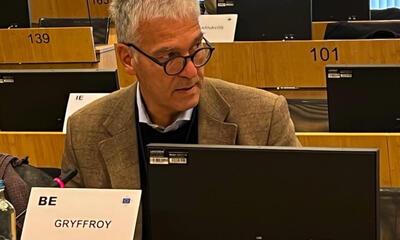
The revision of the renewable energy directive, is part of the FIT for 55 package, a flagship initiative of the EU Green Deal. The proposal of the European Commission adopted last July aims to align existing legislation and targets to the new European Climate Law which sets the objective of 55% CO2 reduction by 2030 and a path to climate neutrality by 2050. The renewable energy directive is a crucial file as, we know, the transition to net zero will necessarily imply a greater deployment of renewable energy sources and phase out of fossil fuels.
Given that the last Renewable energy directive (REDII) is dated only three years ago (agreement reached only in December 2018 and deadline for Member States transposition set for June 2021) the proposal of the Commission amends only certain parts of the directive in order to meet the just mentioned objectives.
It mainly updates EU wide targets on share of renewable energy (40%), sets benchmark of (49%) renewables in buildings and integration of renewables in industry, introduces annual national targets on heating and cooling (1.1% increase).
The European Commission also suggests:
- Promotion of renewable fuels of non-biological origin, such as green hydrogen (2.6 % sub target)
- GHG saving intensity reduction targets for transport (13%) and increased sub target for advanced biofuels
- More sustainability criteria for the use of biomass (and in particular prohibition of biomass from primary forest) and application of greenhouse gas (GHG) saving criteria to existing small scale heat and power installation (at the moment is only for new one)
- Greater cross border cooperation between Member states and obligation to carry out at least one joint renewable energy project, focussing in particular on the potential of cross border cooperation in offshore energy production
- Enhancing the uptake through further digitalisation and training of workers
It is not my intention to enter an ideological discussion about targets (whether we need to have 38/40 or 50 % RES).
I think our role is to ensure regions, towns, rural areas and their citizens have a place in the directive. We want legislation to be as simple as possible for them and ensure that transposition and implementation take place smoothly (which is not the case now).
We want to make it easier to integrate renewables in the grid. We want to encourage greater energy efficiency and circularity
I would like the opinion to focus on issues of local relevance, issues that can really make the difference for our regions and cities, so they can reap the benefits of new legislation.
Facilitating the setting up of Renewable energy communities, cross border cooperation projects among regions and cities, circular economic models, enabling local innovation, are just some examples I would go in more detail in a moment.
5 are the key principles, I believe should guide and inspire our work:
- Subsidiarity: Proposed measures are acceptable when they cannot be implemented at a lower (regional or local) level. I am aware that some concerns over subsidiarity and proportionality have been raised by the Regulatory Scrutiny Board[1], as well as from a couple of National parliaments (Ireland and Sweden) on this proposal. I will take a close look to these remarks, including those coming from our partners of the CoR subsidiarity monitoring network. I think it is also important we assess the territorial impact of the proposed measures and take into account the diversity of our territories, their different potential in generating renewable energy sources and their challenges.
- Bottom-up: Within the existing legislative framework, there must be room for local action. European policies, guidelines, legislation should enable innovation (rather than pose a limitation to innovative projects on local and regional level).
- Efficiency: We must assess proposal against the criteria of both cost efficiency and resource efficiency. Not only are resources scarce, also raw materials being not endless. It is therefore important that we promote circular models as much as possible, in particular reduce waste.
- Inclusive: It is important that any new measure is inclusive. This means that it must not favour any particular (target) group, new measures (targets?) have to be accessible to everyone. In addition, it is also important that no classifications are made. This applies also to technologies. EU legislation should let all available technologies to compete equally without excluding others for unjustified reason, if these prove to achieve high greenhouse gas reductions.To achieve net zero by 2050 in a cost efficient manner, we should be technologically agnostic and preserve the principle of technologic neutrality
- Smart: We shall make maximum use of the available technology. By using smart applications, such as digital meter you / we can let our electrical and household appliances work at the most advantageous times and ensure a better use of production of renewable electricity.
Having these principles in mind, today I would like to focus on specific issues where we, as CoR, could propose improvements to the legislation. These are just my first suggestions, I would welcome any input coming from the colleagues, their regions, cities and municipalities which I will be happy to take on board.
In my view what is important is that:
- We ensure coherence among different part of the Fit for 55 package, but also with other relevant legislation such as the Electricity Market Design Directive for instance
- We are technologically agnostic
- We have a stable legal framework that provides certainty and foster investors' confidence



